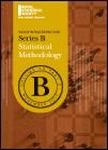-
作者:Hoff, Peter
作者单位:Duke University; Duke University
-
作者:Zhou, Yunzhe; Shi, Chengchun; Li, Lexin; Yao, Qiwei
作者单位:University of California System; University of California Berkeley; University of London; London School Economics & Political Science; University of London; London School Economics & Political Science
摘要:The Markov property is widely imposed in analysis of time series data. Correspondingly, testing the Markov property, and relatedly, inferring the order of a Markov model, are of paramount importance. In this article, we propose a nonparametric test for the Markov property in high-dimensional time series via deep conditional generative learning. We also apply the test sequentially to determine the order of the Markov model. We show that the test controls the type-I error asymptotically, and has...
-
作者:Kumar, Kuldeep
作者单位:Bond University
-
作者:Pilling, Mark
作者单位:University of Cambridge
-
作者:Rohe, Karl; Zeng, Muzhe
作者单位:University of Wisconsin System; University of Wisconsin Madison
-
作者:Zhu, Qianqian; Tan, Songhua; Zheng, Yao; Li, Guodong
作者单位:Shanghai University of Finance & Economics; University of Connecticut; University of Hong Kong
摘要:This article proposes a novel conditional heteroscedastic time series model by applying the framework of quantile regression processes to the ARCH(& INFIN;) form of the GARCH model. This model can provide varying structures for conditional quantiles of the time series across different quantile levels, while including the commonly used GARCH model as a special case. The strict stationarity of the model is discussed. For robustness against heavy-tailed distributions, a self-weighted quantile reg...
-
作者:Chai, Christine P.
作者单位:Microsoft
-
作者:Zhou, Ying; Zhang, Xinyi
作者单位:University of Toronto
-
作者:He, Yinqiu; Gu, Yuqi; Ying, Zhiliang
作者单位:University of Wisconsin System; University of Wisconsin Madison; Columbia University; Columbia University
-
作者:Crane, Harry; Xu, Min
作者单位:Rutgers University System; Rutgers University New Brunswick
摘要:Many statistical models for networks overlook the fact that most real-world networks are formed through a growth process. To address this, we introduce the Preferential Attachment Plus Erd & odblac;s-R & eacute;nyi model, where we let a random network G be the union of a preferential attachment (PA) tree T and additional Erd & odblac;s-R & eacute;nyi (ER) random edges. The PA tree captures the underlying growth process of a network where vertices/edges are added sequentially, while the ER comp...
